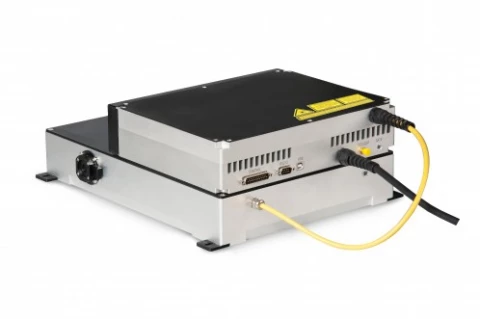PicoYL-20 Ultrafast Fiber Laser
Description
YSL Photonics’PicoYL-20 has a continuously tunable pulse duration from 200ps to 2ns and repetition rates from 30 kHz up to 1 MHz. The short pulse duration, high repetition rates combined with over 150kW peak power give high speed, permanent black/color marking on a variety of metals, thin film coating and thermal sensitive materials. The single mode beam quality picosecond pulses with over 150kW peak power open up a variety of micromachining applications such as SiC/Silicon cutting, resistor trimming and marking of transparent material. The laser is completely controlled via an industry standard digital interface with optional DB25 or RS-232.
PicoYL-20 Ultrafast Fiber Laser
Specifications |
|
|---|---|
| Wavelength: | 1064 nm |
| Repetition Rate: | 0.03-1 MHz |
| Output Power: | 20 W |
| Pulse Duration: | 200000 fs |
Features
● Average Power ~20W
● Pulse Duration 200ps-2ns
● Peak Power 150kW
● Repetition Rate 30kHz-1000kHz
● Pulse Energy 100μJ@2ns or 30uJ@200ps
● M2<1.3
● Burst Mode Function
Applications
● Silicon or SiC Dicing
● LED Sapphire Substrate Dicing
● Lion Ion Battery Foil Cutting
● Thin Film Solar Cell Scribing
● Metal Marking
● Chrome Vanadium Texturing
● Micromaching of Transparent materials
For pricing, technical or any other questions please contact the supplier
- No registration required
- No markups, no fees
- Direct contact with supplier
-
Ships from:
China
-
Sold by:
-
On FindLight:
since 2015
Frequently Asked Questions
The PicoYL-20 Ultrafast Fiber Laser has a continuously tunable pulse duration from 200ps to 2ns.
The average power of the PicoYL-20 Ultrafast Fiber Laser is ~20W.
The PicoYL-20 Ultrafast Fiber Laser is suitable for a variety of applications including silicon or SiC dicing, LED sapphire substrate dicing, lion ion battery foil cutting, thin film solar cell scribing, metal marking, chrome vanadium texturing, and micromachining of transparent materials.
The PicoYL-20 Ultrafast Fiber Laser has a peak power of 150kW.
The PicoYL-20 Ultrafast Fiber Laser is completely controlled via an industry standard digital interface with optional DB25 or RS-232.

